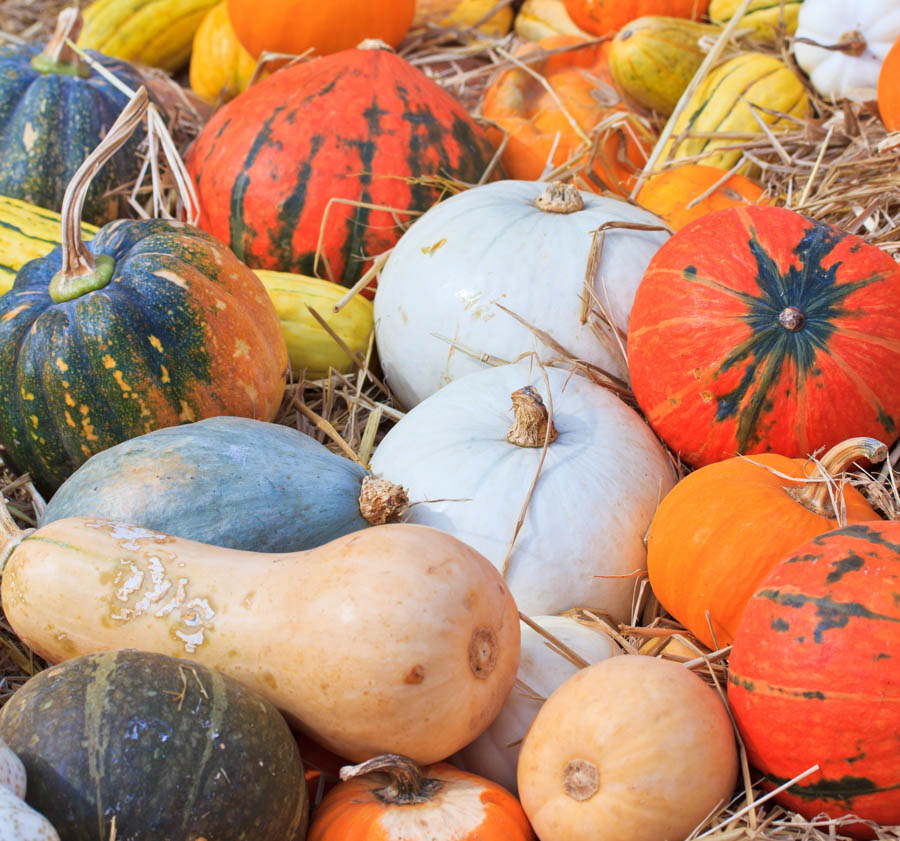Harvesting and Curing Varieties of Winter Squash

Winter squash are often left unharvested until the end of a long growing season when plants have died back. Different varieties may have unique clues or signs that fruits are mature. Most varieties are ready for harvest when fruits are in full color, rinds are firm, and the nearby vines and stem to a fruit have shriveled or died. Plant leaves and stems may generally be turning brown and dying.
Many varieties are ready for harvest when the rind has become so hard that it can’t be easily nicked or dented with a fingernail. Acorn squash and other shorter-season Cucurbita pepo varieties are often ready for harvest when rinds are still somewhat soft.
Acorn squash varieties are usually mature when their skin is dark-green, the part of the fruit that was touching the ground shifts in color from yellow to orange, and/or the stem to the fruit has shriveled and dried.
Be patient and wait until full maturity to harvest winter squash. Fruits will not continue to mature or harden if harvested early, and immature fruits will not last well in storage.
Use a knife or pruning shears to cut squash from the vine. Loppers or a pruning saw may be needed for large fruits or thick stems. Leave 2 to 6 inches of stem above the fruit, and avoid using the stem stub as a handle for lifting or moving a squash fruit. A sufficient stem stub slows and reduces microbial infection coming in through the stem and will result in a longer storage period for the squash.
Most varieties of winter squash are cured after harvesting (not acorn and delicata types, for which curing can degrade the quality of the fruit). Curing reduces water in squash fruits and hardens their skins, preparing them to last as long as possible in storage. Curing also tends to increase sweetness of winter squash because it reduces their water content in proportion to sugars. Winter squash fruits are ideally cured unwashed outdoors in sunlight at warm temperatures (ideally about 80° to 85°F) for about 7 to 14 days. Fruits should be kept dry while curing, and may need part shade to avoid sunscald, particularly during warm-to-hot weather. They can be cured indoors in a well-ventilated area if weather is cool or rainy, or if curing fruits may be subject to wet soil, sprinklers, or other irrigation.
Other articles of interest regarding growing winter squash:
Growing Winter Squash and Pumpkins in the California Home Garden
The Garden Zeus Guide to Watering Cucumbers, Melons and Squash (Cucurbits)
Making Friends With Winter Squash: A GardenZeus Guide to Types, Species and Characteristics
